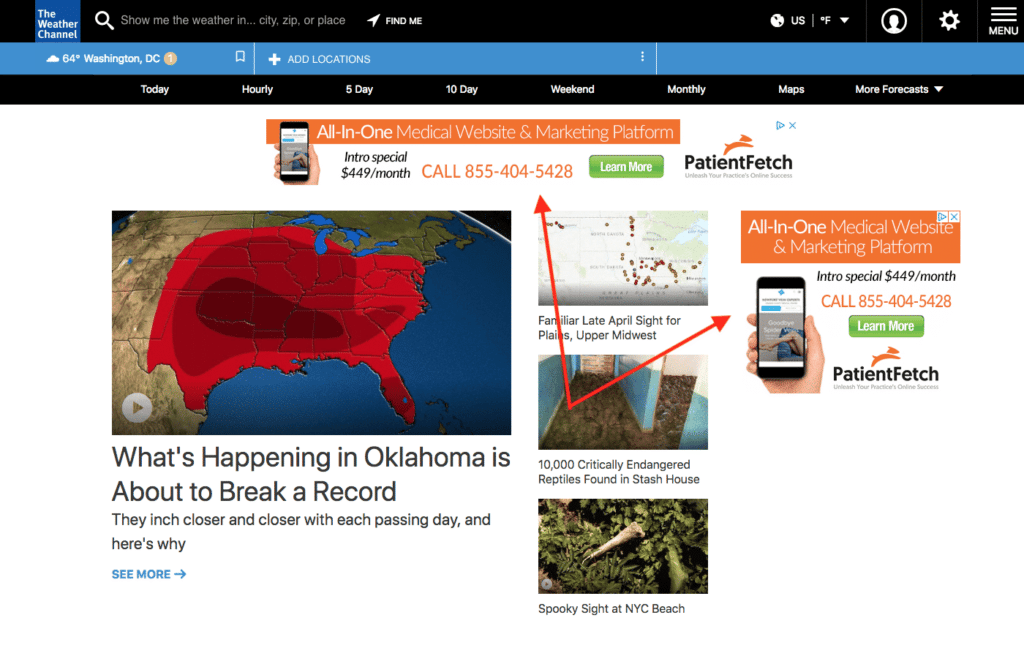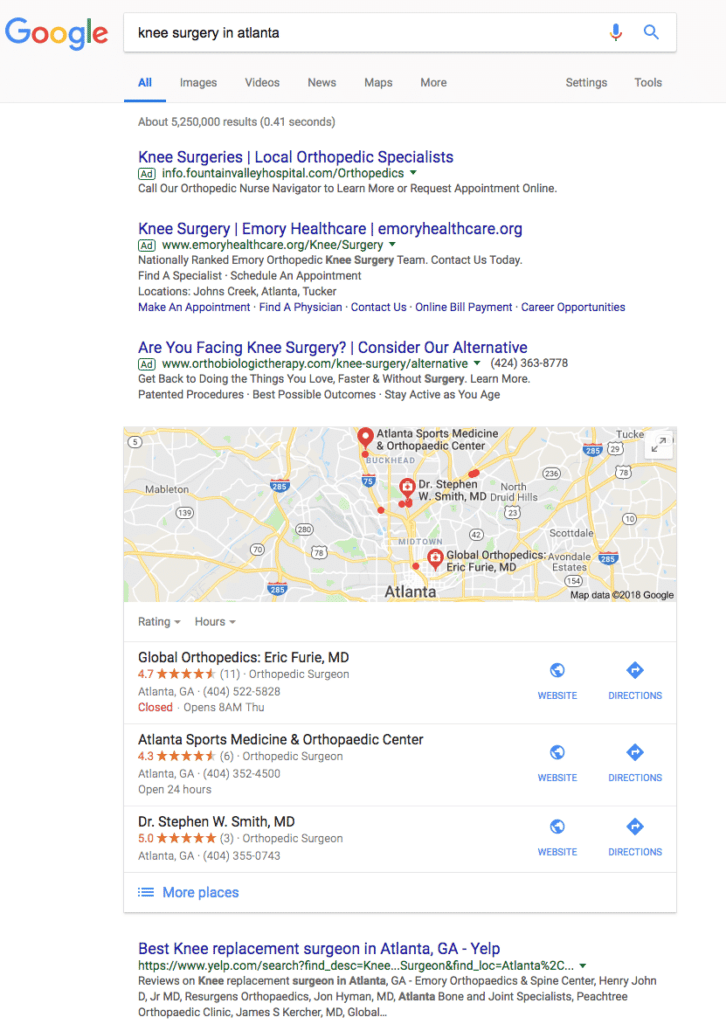[VIDEO] Search and Display Advertising in Healthcare: What's Best for Your Bottom Line?
A solid digital marketing strategy involves several components, but paid digital advertising is the most direct route to your bottom line. I'll put it this way: you can pray for clicks with healthcare search engine optimization (SEO), using the proper keywords and hoping it gets you to the top of Google's results pages--or you can pay for clicks and see results. That's where medical PPC (also known as pay-per-click or paid digital advertising) comes in.
There are two primary ways to run an effective medical PPC campaign: paid search and display advertising. Paid search puts your name at the top of Google's search results, while display ads are a bit more passive but can significantly build your brand. So how do you know which strategy to focus on? Google invited us to discuss this topic at their headquarters in Silicon Valley. Check it out below, or keep reading.
See also: [VIDEO] Why YouTube Should Be Part of Your Healthcare Advertising
The Difference Between Paid Search and Display Advertising
Pay-per-click advertising allows you to target certain keywords and get your site within the top 3 or 4 results on the search engine results page (the SERP). The only thing clearly distinguishing your paid search advertisement from organic listings is one small word--"ad"--off to the side (which some searchers may not even notice).
The SERPs are what we would call the "low-hanging fruit." People are actively searching for a service like "knee surgery in Atlanta" or "Los Angeles cosmetic dentist," so you reach the people ready to interact with your site and possibly become a patient.
Display advertisements are a lot more passive. These are the advertisements that show up at the top of a website (banner ads) or off to the side--results that may or may not have to do with the website you're looking at. You can see these while reading blogs, articles, or browsing your favorite websites. Typically, you're seeing the ad because it is relevant to the content on the page or based on your past behavior.
Featured: Complete Digital Healthcare Advertising Strategies
Using Display Advertising in Healthcare Marketing
Display advertising builds your brand. I like to say it "stains the brain," helping others to recall your brand when they need you. Someone might be searching symptoms on WebMD, browsing the New York Times website, or even just watching a YouTube video, when they notice your image or video advertisement.

Remarketing through display advertising keeps your brand fresh in someone's mind, even when browsing the Weather Channel.
Display advertising allows you to target people based on user behavior or the content they are currently browsing. While they may not currently be searching for your brand, display ads allow prospective patients familiarity with your name before they're ready to make a decision. They may be researching procedures. When they are ready to find a doctor in your area, you've already planted that seed so they can recall your name.
Targeted Medical PPC through Paid Search
Paid search is a lot more intent-based, putting results at the top of the page. For example, this keyword search for "knee surgery in Atlanta" includes 3 local orthopedic surgeons at the top of the results, above Yelp, thanks to paid advertising.
You might believe that people have a tendency to skip over these ads. Yes, some people skip over the paid results, but others don't even realize they are paid results. Some searchers may even prefer the paid ads when they are ready to buy because it shows you are actively looking for patients.
We know for a fact that people do click on paid advertisements based on data and recorded phone calls linked directly to these local ads. Paid search is a way to profitably, predictably, and passively generate patients quickly, bringing your results to the top of Google and targeting the right people at the right time.
So Which Paid Healthcare Search Strategy Is Best?
So why would you choose display advertising over paid search? Here's the thing: digital advertising isn't just about your display ads, search ads, or YouTube campaigns. You should use them all together as part of a solid medical PPC strategy for best results.
If you're already doing paid advertising within the search results, you can layer this with image or video ads that go across various platforms. Search advertisements are a way to reach those who are actively searching, but display ads bring online synergy between all your advertisements.
Most of a searcher's time is spent passively searching and browsing webpages, so display ads allow you lead prospective patients to click on your ad now, or come back to you later when they're ready to find a doctor.
The journey to your site is often more complex than a single search or a single click. With a thorough digital advertising campaign, your pay-per-click works together to reach the same person across multiple devices, whether they're reading articles or blogs or watching videos. When they are ready to take action and conduct that final keyword search to locate doctors they can trust, a searcher may be more likely to become a patient.
Related Articles:
How to Avoid the 7 Most Common Paid Search Mistakes in Healthcare
Digital Ads and Healthcare: What Makes Some Companies So Successful?
Why Does Digital Advertising Cost So Much in Healthcare?
Healthcare Pay-Per-Click Advertising: Here's What You Should Consider
Pay-Per-Click and Other Online Healthcare Advertising Terms You Need to Know











